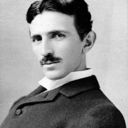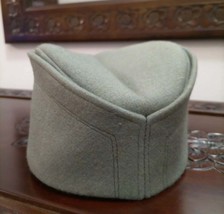Sajkaca - Serbian traditional hat handmade and 15 similar items
Sajkaca - Serbian traditional hat handmade
£20.99 GBP
View full item details »
Shipping options
Offer policy
OBO - Seller accepts offers on this item.
Details
Return policy
Full refund available within 30 days
Purchase protection
Payment options
PayPal accepted
PayPal Credit accepted
Venmo accepted
PayPal, MasterCard, Visa, Discover, and American Express accepted
Maestro accepted
Amazon Pay accepted
Nuvei accepted
View full item details »
Shipping options
Offer policy
OBO - Seller accepts offers on this item.
Details
Return policy
Full refund available within 30 days
Purchase protection
Payment options
PayPal accepted
PayPal Credit accepted
Venmo accepted
PayPal, MasterCard, Visa, Discover, and American Express accepted
Maestro accepted
Amazon Pay accepted
Nuvei accepted
Item traits
| Category: | |
|---|---|
| Quantity Available: |
5 in stock |
| Condition: |
New with tags |
| Brand: |
"Handmade" |
| Size: |
M |
| Style: |
Top Hat |
| Department: |
Men |
| Colour: |
Grey |
| EAN: |
Does not apply |
Listing details
| Shipping discount: |
No combined shipping offered |
|---|---|
| Posted for sale: |
More than a week ago |
| Item number: |
1545201990 |
Item description
The
?ajka?a (Serbian Cyrillic: ???????, pronounced [??jkat?a]) is the
Serbian national hat or cap. Traditionally worn by men in the Serbian
countryside, it is named after Serb river troops known as ?ajka?i, who
protected the Austrian Empire against the Ottoman Turks in the 18th
century. A popular nationalist symbol in Serbia since the beginning of
the early 20th century, it is typically black, grey or green in colour
and is usually made of soft, homemade cloth. It became widely worn by
Serb men during the First Serbian Uprising and was a key component in
the uniform of the Serbian military from the beginning of the 19th
century until the end of the 20th century. Today, it is mostly worn by
elderly men in rural communities.
The ?ajka?a is a traditional
hat worn by men in the Serbian countryside. It is the national hat of
Serbia and is believed to have originated in the Serbian region of Banat
during the 18th century, when ?ajka?i (Serb river troops in the service
of the Austrian Empire) guarded the Danube and Sava rivers against the
Ottoman Empire and wore caps in the shape of an overturned chaika
(Serbian: ?ajka, ?????) boat. It became widely worn amongst Serbs at the
time of the First Serbian Uprising, when the men of Serbian
revolutionary Kara?or?e Petrovi? began discarding their Turkish fezzes
in favour of the cap.
The typical cap of peasants from the
?umadija region of Serbia, the ?ajka?a eventually acquired a dual
purpose: during times of peace it was worn in the countryside, and in
wartime it became part of the standard Serbian military uniform. During
World War I, the cap was regularly worn by the soldiers of the Kingdom
of Serbia. Serbia was eventually overrun by a combined Austro-Hungarian,
German and Bulgarian invasion in 1915, and in 1916 the wearing of the
?ajka?a, alongside other Serbian folk attire, was outlawed by Bulgarian
authorities in the wake of the Bulgarian occupation of southern Serbia.
After the war, the wearing of the hat in Bosnia was made obligatory by
Serbian authorities in place of the Turkish fez.
Serbian Partisans wearing the ?ajka?a (1941).
During
World War II, the ?ajka?a was the standard hat worn by Serbian Chetnik
irregulars in the Axis-occupied Kingdom of Yugoslavia. It was also worn
by Serbian Partisans. After the war, it was replaced by the Titovka cap
in the armed forces of communist Yugoslavia.
The ?ajka?a was worn
by Serb soldiers during the breakup of Yugoslavia. Bosnian Serb
reservists and paramilitaries wore the cap during the 1992?95 Bosnian
War, and it was later adopted by Bosnian Serb forces to be the official
headgear of the Army of Republika Srpska (Serbian: Vojska Republike
Srpske, VRS).
Following the 1991 Battle of Vukovar, fought during the
Croatian War of Independence, Croatian Serb authorities erected
gravestones to the Serb soldiers who were killed fighting for the city.
These were originally topped with sculptural evocations of the ?ajka?a
cap. After Vukovar's reintegration into Croatia the gravestones were
repeatedly vandalized, leading the Serb community in the town to replace
them with more neutral gravestones without any overt military
connotations. The 1999 NATO bombing of Yugoslavia saw McDonald's chains
in Serbia promote their products by distributing posters and lapels
which depicted the ?ajka?a standing atop the golden arches of the
McDonald's logo in an attempt to bolster Serbian national pride.
The
?ajka?a has been a popular nationalist symbol in Serbia since the
beginning of the 20th century. It is commonly worn by elderly men in the
Serbian countryside, whereas Serbian youth wear traditional costumes
only for folklore concerts.Designed with a V-shaped top in the form of
an overturned chaika, the ?ajka?a is narrow and typically black or grey
in colour.[16] It is usually made of soft, homemade cloth and is worn
without any symbols during peacetime. During times of war, cockades
featuring the Serbian double-headed eagle and the motto Only Unity Saves
the Serbs are often seen on the cap.[3] The ?ajka?a worn by Serbian
soldiers during World War I had a non-reflecting peak and was topped
with a royal monogram
|
Why are we showing these items?
Booth
NikolaTesla's booth |

|

-
Refine your browsing experience
We can show you more items that are exactly like the original item, or we can show you items that are similar in spirit. By default we show you a mix.
This item has been added to your cart
 Sajkaca - Serbian traditional hat handmade added to cart.
5 available in stock
Sajkaca - Serbian traditional hat handmade added to cart.
5 available in stock
View Cart or continue shopping.
 Please wait while we finish adding this item to your cart.
Please wait while we finish adding this item to your cart.
Get an item reminder
We'll email you a link to your item now and follow up with a single reminder (if you'd like one). That's it! No spam, no hassle.
Already have an account?
Log in and add this item to your wish list.






















